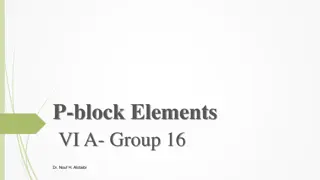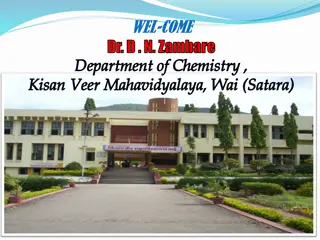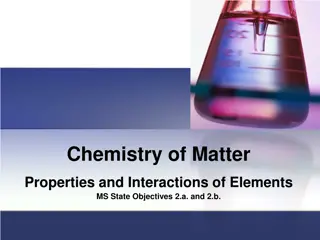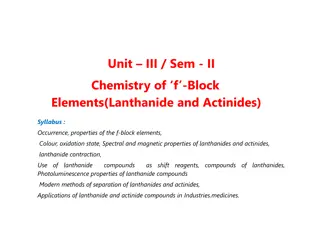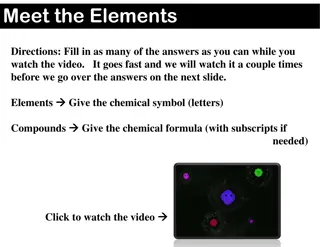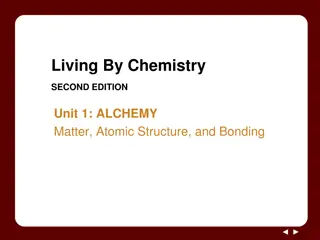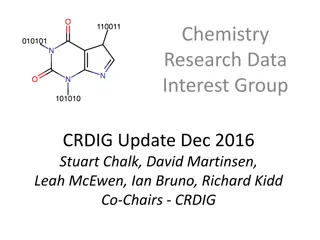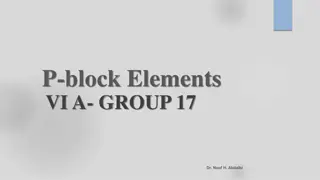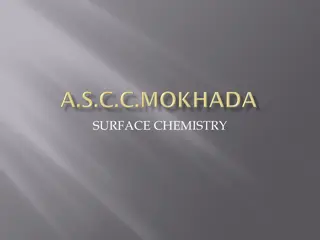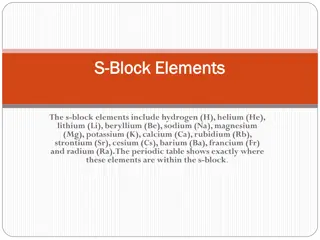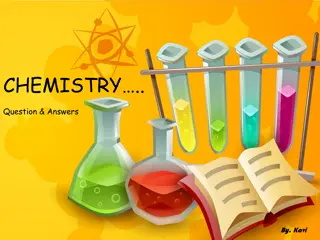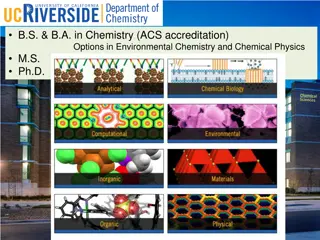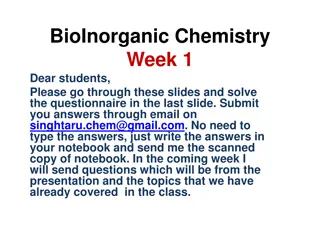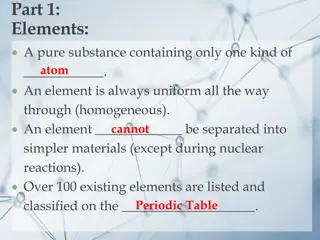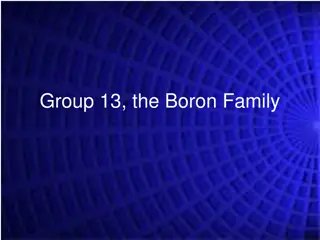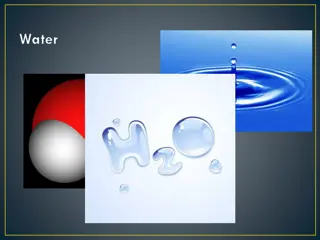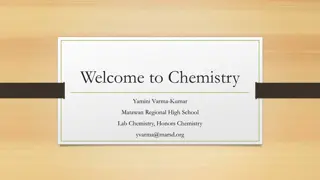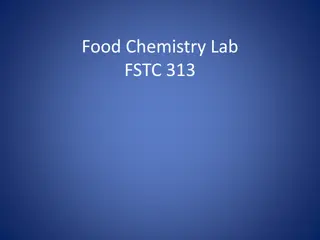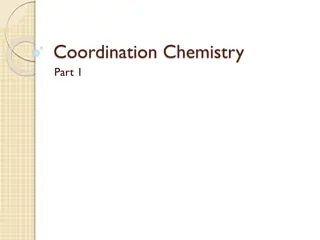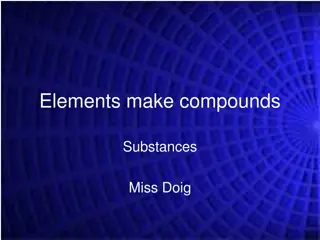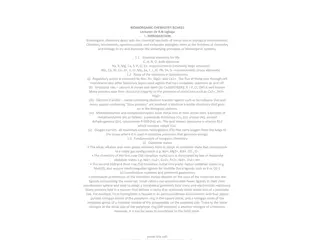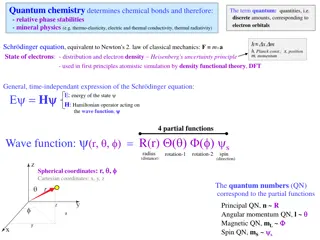Understanding Group 17 Elements in Chemistry
Explore the properties, electron configurations, appearances, and industrial uses of Group 17 elements in the periodic table. Learn about nonmetals, metals, metalloids, and noble gases like fluorine, chlorine, bromine, iodine, and astatine. Discover the industrial production and reactions of hydrogen, a key element in various industrial processes.
Download Presentation

Please find below an Image/Link to download the presentation.
The content on the website is provided AS IS for your information and personal use only. It may not be sold, licensed, or shared on other websites without obtaining consent from the author. Download presentation by click this link. If you encounter any issues during the download, it is possible that the publisher has removed the file from their server.
E N D
Presentation Transcript
Electron configuration Symbol F [He]2s22p5 fluorine Cl [Ne]3s23p5 chlorine Br [Ar]3d104s24p5 bromine I [Kr]4d105s25p5 iodine At [Xe]4f145d106s26p5 astatine 3
Appearance; Fluorine is a poisonous pale yellow gas. chlorine is a poisonous pale green gas. bromine is a toxic and caustic brown volatile liquid. (The only liquid nonmetal) iodine is a shiny black solid which easily sublimes to form a violet vapor on heating. 4
Image: Liquid fluorine at cryogenic temperatures Image: Liquid bromine Image: Chlorine gas chlorine bromine Fluorine Electron shells of astatine (2, 8, 18, 32, 18, 7) Image: Iodine crystal Astatine t0.5 = 8.1 d iodine 5
1) Hydrogen with halogen?! B.P. 252.70C;1H,2D,3T. Facts; 15% of all atoms, 1% by mass, water, hydrocarbons, at STP 1L = 0.0899 g, colorless, odorless, tasteless 2) Industrial production of hydrogen: a) Steam reformer process: CH4+ 2H2O(g) CO2+ 4H2 CH4+ H2O(g) CO + 3H2 H2, CO, CO2; into shift converter at 4500C CO + H2O CO2+ H2 CO2+ H2 cold water, high pressure CO2(aq)+ H2 gas 6 6
b) water gas; c) Fe and steam; d) cracking; e) electrolysis NaCl brine; f) 2NaCl+2H2O 2NaOH+Cl2+H2 g) 2H2O 2H2+ O2 3) H2from displacement reaction: M + H2O MOH + H2 7 7
4) Reaction of hydrogen: a) salt like hydride: H-H bond energy 431 kJ/mol, High temp. (very high and low electron affinity). 2Na(s) + H2 2NaH (H-like He, isoelectronic) Ca(s) + H2 CaH2 H + H2O H2+ OH b) complex hydrides: NaBH4, LiAlH4 8 8
The halogen: (salt former) 1.Electronicconfiguration; [core]ns2np5 2. Physical state: gas, liquid, solid (Intermolecular force). 3. 1stionization energy: I2+, exist not I+. 4. Electronegativity: 4 to 2.7 5. Bond energy: F2is weak, but HF is the strongest, so it is very reactive. 10
7) Occurrence 12 12
Industrial preparation of the halogen: 1. Fluorine: KF + HF KHF2(K+HF2-) 2KHF2(l) 2. Chlorine: 2Na++2Cl +2H2O H2+ F2+ 2KF(l) H2+Cl2+2Na++2OH 3. Bromine: Cl2+ 2Br- 2Cl + Br2(l) 4. Iodine: Cl2+ 2I 2Cl-+ I2(l) In laboratory, oxidation of acids. 13
8) The inter halogen compounds: XX' (BrCl) no IF XX3' (ClF3, BrF3and IF3) XX5' (ClF5, BrF5and IF5) only IF7 14 14
9) The Metal Halides: K2CO3+ 2HF(l) 2KF + CO2+ H2O Some ionic KCl Some covalent TiCl4 15
10) Oxyacid's of the halogen: HClO, HClO2, HClO3, HClO4 (Table 21.5, p. 599) Hypochlorous chloric acid per http://www.youtube.com/watch?v=usR GfhsnLUc&NR=1&feature=endscreen 16 16
11) Industrial uses of the halogens: (p. 604) 20






